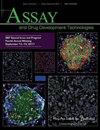雷洛昔芬纳米结构脂质载体的制备和表征,用于渗透和吸收增强应用。
IF 1.6
4区 医学
Q4 BIOCHEMICAL RESEARCH METHODS
引用次数: 2
摘要
雷洛昔芬(Raloxifene, RLX)是生物制药分类系统(BCS)第二类药物,是一种选择性雌激素受体调节剂(SERM),对骨骼具有雌激素作用,对子宫内膜和乳房具有抗雌激素作用。低溶解度、高通透性、高代谢、低生物利用度是雷洛昔芬的特点。尽管雷洛昔芬有60%的口服吸收,但由于其溶解度低和广泛的肠/肝首过代谢(约90%),其生物利用度极低(2%)。因此,提高雷洛昔芬的溶解度以提高其生物利用度是非常重要的。本研究采用熔融分散超声法制备雷洛昔芬纳米脂质载体(RNLCs)。对制备的rncs进行了表征,并在人上皮性乳腺癌细胞系(MCF-7)中进行了体外研究。RNLCs的尺寸为114.8±0.98 nm, zeta电位为+9.21±0.58 mV。透射电镜(TEM)图像显示颗粒尺寸在65 ~ 120 nm之间。与雷洛昔芬溶液相比,RNLCs的包封效率为75.04%±2.75%,缓释时间为7 d。制备的RNLCs成功被MCF-7细胞以时间依赖性的方式吸收,与雷洛昔芬药物相比,RNLCs表现出更高的细胞毒性。采用平行人工膜透性测定法(PAMPA)计算雷洛昔芬溶液的透性速率为8 × 10-6 cm/s, RNLCs的透性速率为17.8 × 10-6 cm/s。因此,通过计算的渗透率,我们可以得出结论,雷洛昔芬作为纳米结构的脂质载体,其渗透率增加。总的来说,制备的rncs被发现优于雷洛昔芬药物。本文章由计算机程序翻译,如有差异,请以英文原文为准。
Formulation and Characterization of Raloxifene Nanostructured Lipid Carriers for Permeability and Uptake Enhancement Applications.
Raloxifene (RLX), a biopharmaceutical classification system (BCS) class II drug, is a selective estrogen receptor modulator (SERM) having an estrogenic effect on the bone and an antiestrogenic effect on the endometrium and breast. Low solubility, high permeability, high metabolism, and low bioavailability are the characteristics of raloxifene. Although 60% is absorbed orally, raloxifene shows extremely poor bioavailability (2%) owing to its low solubility and extensive (>90%) intestinal/hepatic first-pass metabolism. Hence, it becomes important to increase the solubility of raloxifene to enhance its bioavailability. In this study, raloxifene nanostructured lipid carriers (RNLCs) were prepared using the melt dispersion ultrasonication method. The prepared RNLCs were characterized, and the in vitro studies were carried out in the human epithelial breast cancer cell line (MCF-7). The RNLCs had a size of 114.8 ± 0.98 nm and a zeta potential of +9.21 ± 0.58 mV. Transmission electron microscopy (TEM) images showed particle size ranging from 65 to 120 nm. With an entrapment efficiency of 75.04% ± 2.75%, the RNLCs showed sustained release over 7 days compared with the raloxifene drug solution. The prepared RNLCs were successfully taken up by the MCF-7 cells in a time-dependent manner, and the RNLCs showed increased cell cytotoxicity compared with the raloxifene drug. Using the parallel artificial membrane permeability assay (PAMPA), the permeability rate for raloxifene solution was calculated to be 8 × 10-6 cm/s, and for the RNLCs, it was calculated to be 17.8 × 10-6 cm/s. Hence, from the permeability rate calculated, we could conclude that raloxifene, when formulated as nanostructured lipid carriers, showed increased permeability. Overall, the prepared RNLCs were found to be superior to the raloxifene drug as such.
求助全文
通过发布文献求助,成功后即可免费获取论文全文。
去求助
来源期刊

Assay and drug development technologies
医学-生化研究方法
CiteScore
3.60
自引率
0.00%
发文量
33
审稿时长
>12 weeks
期刊介绍:
ASSAY and Drug Development Technologies provides access to novel techniques and robust tools that enable critical advances in early-stage screening. This research published in the Journal leads to important therapeutics and platforms for drug discovery and development. This reputable peer-reviewed journal features original papers application-oriented technology reviews, topical issues on novel and burgeoning areas of research, and reports in methodology and technology application.
ASSAY and Drug Development Technologies coverage includes:
-Assay design, target development, and high-throughput technologies-
Hit to Lead optimization and medicinal chemistry through preclinical candidate selection-
Lab automation, sample management, bioinformatics, data mining, virtual screening, and data analysis-
Approaches to assays configured for gene families, inherited, and infectious diseases-
Assays and strategies for adapting model organisms to drug discovery-
The use of stem cells as models of disease-
Translation of phenotypic outputs to target identification-
Exploration and mechanistic studies of the technical basis for assay and screening artifacts
 求助内容:
求助内容: 应助结果提醒方式:
应助结果提醒方式:


